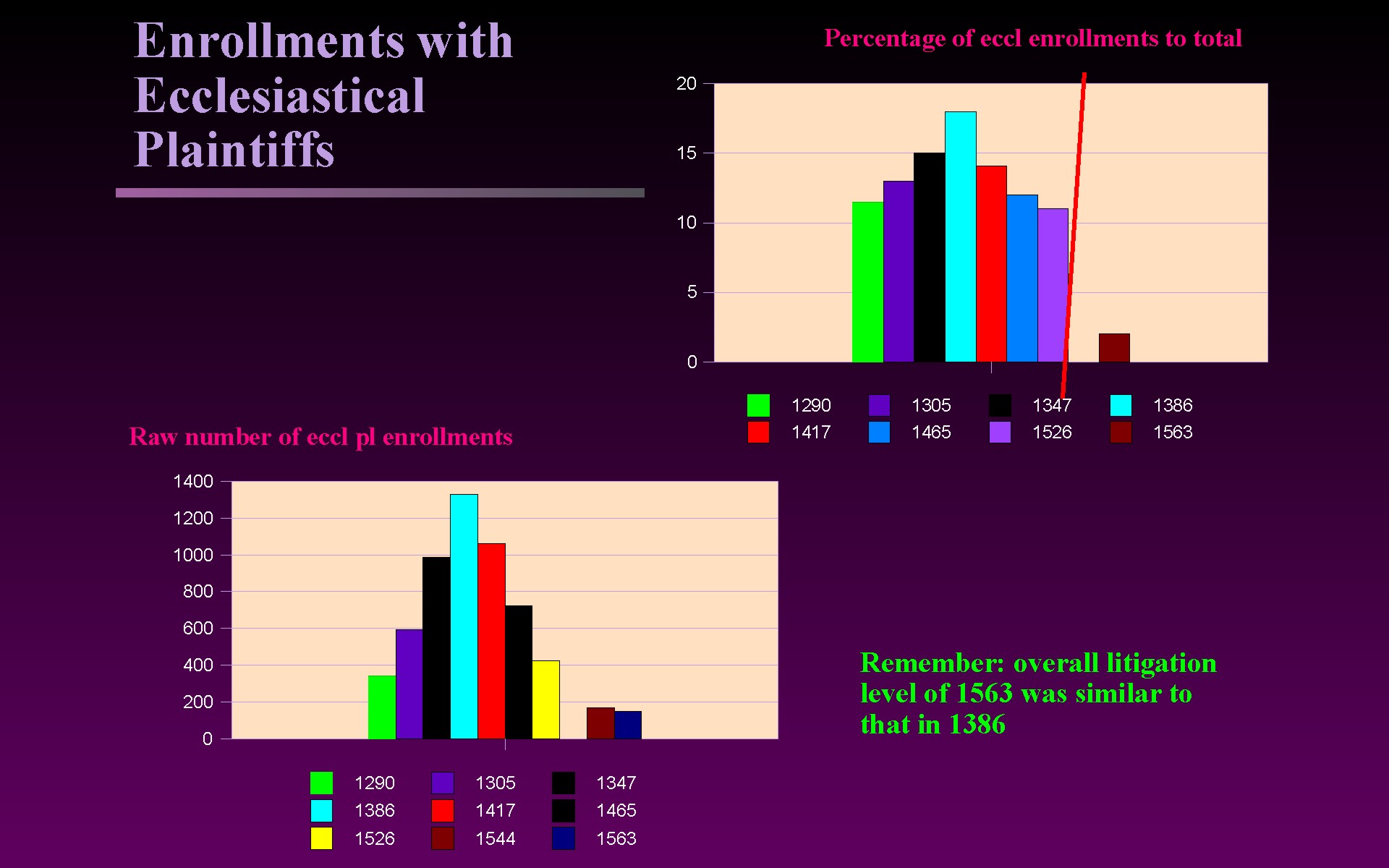


Clerics as Litigants 2
The decline in the percentage that enrollments with clerical plaintiffs bore to all litigation indicate a high point in the late fourteenth century, when 18% of litigation had a clerical plaintiff, down then to a low of 11% right before the Reformation, with a collapse of such cases after the Reformation. The exclusion of the clergy from commerce and the limitations applied to pluralism decreased their economic standing and thus the occasions they would have to bring suits at common law. Once again, see Palmer, Selling the Church (2002). The explanations would seem to be as in the previous frame.
The decline in the amount of clerical usage of the common law may have contributed to the willingness of Fyneux and Coke, both chief justices, to launch campaigns about church rights to exercise governance powers of one kind or another (part of the construction of that valuable but essentially fictitious wall between church and state).

AALT Homepage





